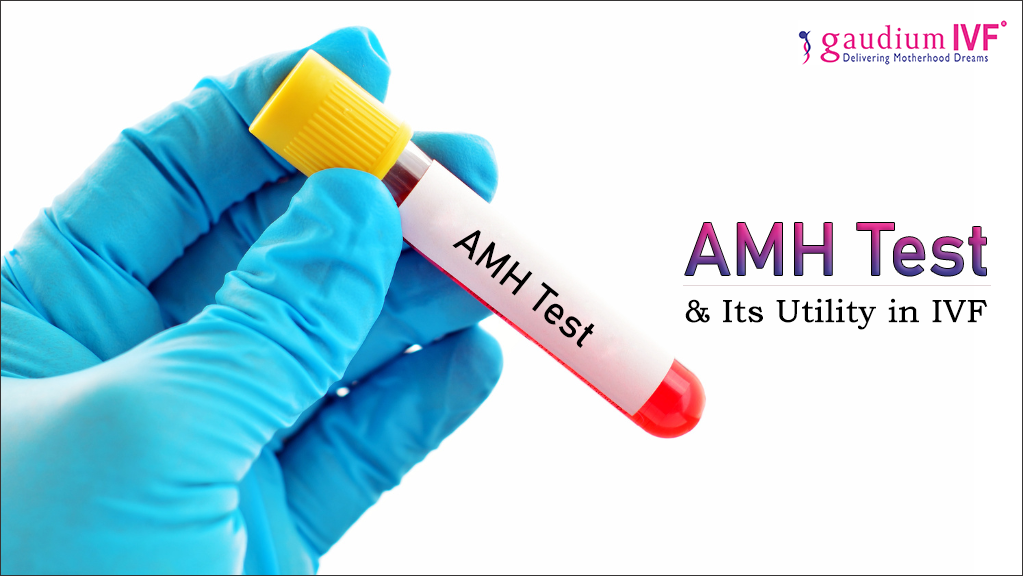Anti-Mullerian Hormone (AMH), also known as Mullerian-inhibiting substance (MIS), is a glycoprotein hormone that plays a crucial role in the development of the reproductive system and the regulation of ovarian follicle growth. AMH is produced primarily by granulosa cells of preantral and small antral follicles in the ovaries in females and by Sertoli cells in the testes in males. In this blog with Gaudium IVF, the Best IVF Clinic in Mumbai we will delve into more intricate details of AMH test.
A critical aspect of the IVF process involves assessing the ovarian reserve of a woman, which is a measure of the quantity and quality of her remaining eggs. This is where the Anti-Müllerian Hormone (AMH) test plays a pivotal role. The role and implications of AMH in both male and female developmental physiology are profound, influencing not only developmental processes but also serving as a diagnostic marker in various clinical conditions.
Significance in Female Reproduction
In females, the role of AMH shifts focus postnatally to the ovaries, where it serves as a key regulator of ovarian follicle reserve and folliculogenesis. AMH levels in women reflect the size of the remaining ovarian follicle pool and, therefore, can be used as a marker of ovarian reserve. This is of particular importance in the field of reproductive medicine, where AMH measurement is employed to assess a woman’s fertility potential, including predicting the onset of menopause and evaluating ovarian response in assisted reproductive technologies (ART).
AMH inhibits the initial growth of follicles as well as the sensitivity of follicles to Follicle Stimulating Hormone (FSH), thereby playing a pivotal role in controlling the growth and development of ovarian follicles. This mechanism ensures that not all follicles are activated at once, helping to preserve the ovarian reserve over time.
Fertility Assessment and Assisted Reproduction
AMH levels are a valuable tool in assessing ovarian reserve and predicting ovarian response to stimulation in IVF procedures. High AMH levels typically indicate a good ovarian reserve and potentially a better response to ovarian stimulation, whereas low AMH levels suggest diminished ovarian reserve and possibly a lower success rate with IVF.
However, it’s crucial to understand that while AMH is a valuable tool in the IVF process, it is not the sole determinant of IVF success. Other factors, including age, overall health, sperm quality, and the presence of other fertility issues, also play critical roles in the outcome of IVF treatments. Moreover, there have been instances where women with low AMH levels have achieved successful pregnancies through IVF, underscoring the fact that each individual’s fertility journey is unique.
Ovarian and Gonadal Disorders
Elevated or reduced levels of AMH can indicate various pathologies, including ovarian tumors, premature ovarian failure, and gonadal dysgenesis. Thus, AMH measurements can assist in the diagnosis and management of these conditions.
In conclusion, the AMH test is a cornerstone of modern IVF practices, offering invaluable insights into a woman’s reproductive potential. By providing a clearer picture of ovarian reserve, AMH testing enables the best fertility Doctor in Mumbai to better customize treatment plans, offer more accurate treatment information to couples, and, ultimately, improve the chances of a successful pregnancy through IVF. Yet, it’s important to view AMH levels as part of a broader fertility assessment, considering the multifaceted nature of reproductive health and the miracle of conception.
Source: https://ventsmagazine.com/2024/03/05/anti-mullerian-hormone-amh-test-and-its-utility-in-ivf/






Comments